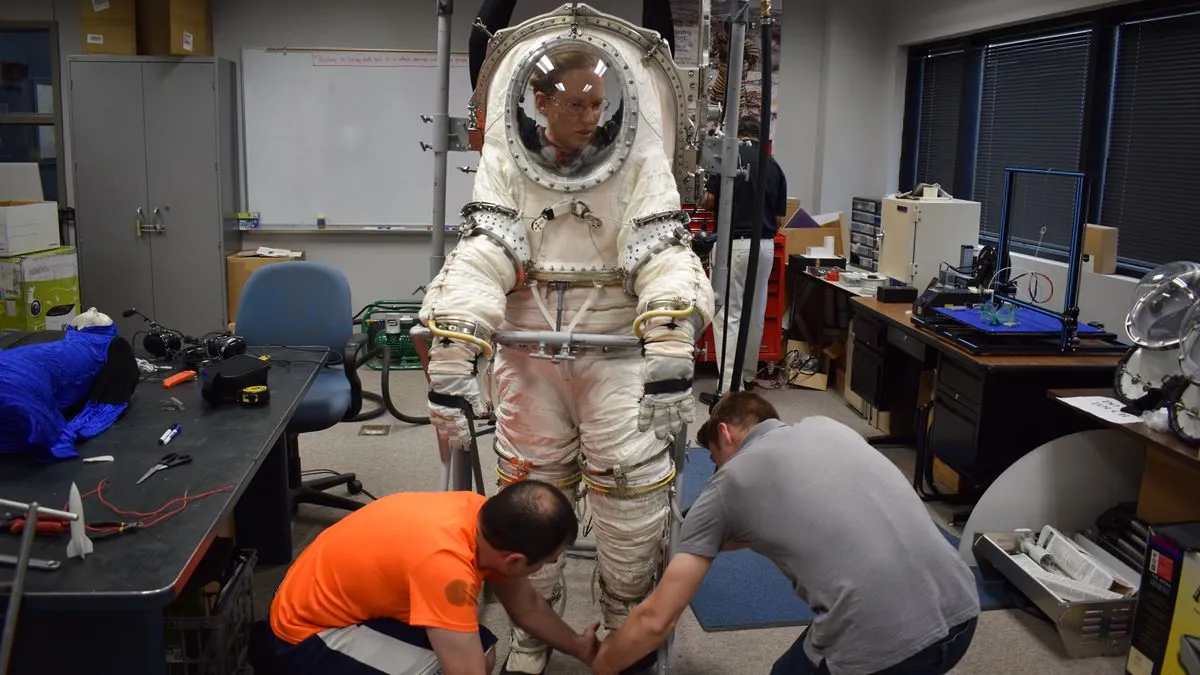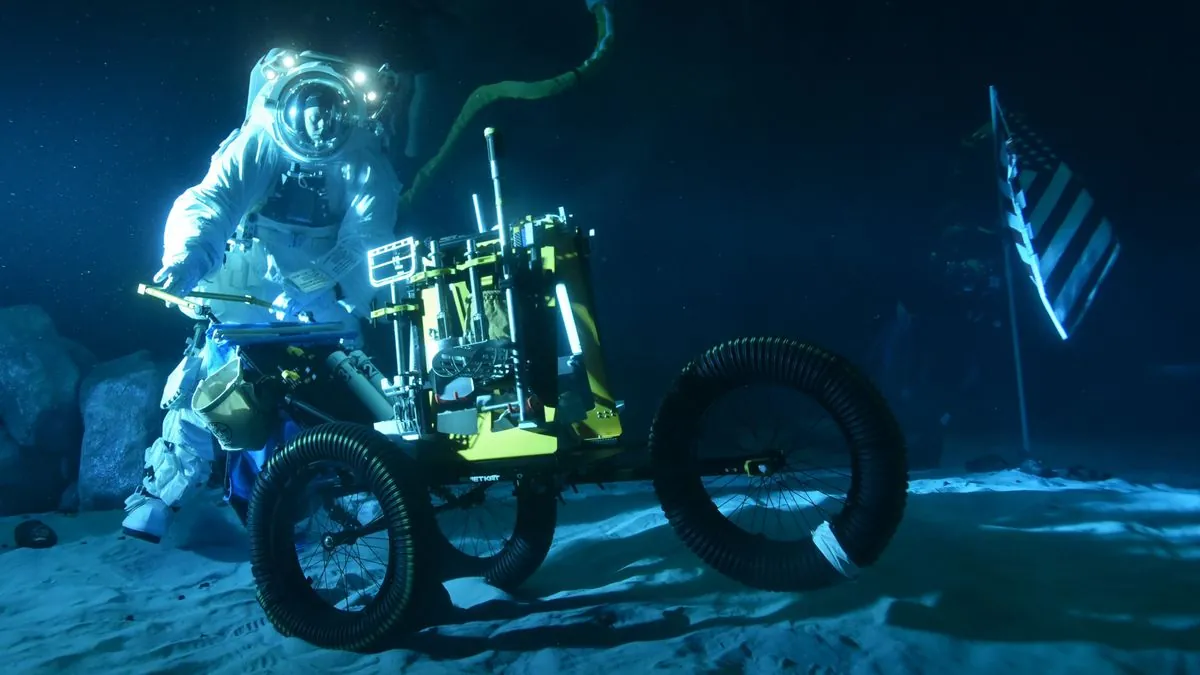ESA Unveils Lunar Simulation Facility for Future Moon Missions
The European Space Agency has opened a state-of-the-art lunar simulation facility in Germany. This groundbreaking installation aims to prepare astronauts for future moon missions, replicating lunar conditions with unprecedented accuracy.

The European Space Agency (ESA) has taken a significant step towards future lunar exploration with the inauguration of its cutting-edge LUNA facility near Cologne, Germany. This innovative installation, which opened its doors one year and five days ago, aims to provide astronauts with a realistic lunar environment for training and research purposes.
The LUNA facility features a surface area slightly larger than a basketball court, covered with 900 tons of finely ground volcanic rock that closely mimics the moon's regolith. This attention to detail is crucial, as lunar dust is known for its highly abrasive nature, posing potential risks to equipment and spacesuits. The facility's design takes into account the moon's lack of atmosphere, which exposes its surface to extreme temperature variations and leaves it vulnerable to impact craters of various sizes.
To simulate the moon's reduced gravity, which is approximately one-sixth of Earth's, the facility employs an ingenious system of ceiling-mounted trolleys. These devices follow the movements of suspended astronauts or rovers, allowing them to experience and adapt to the unique challenges of lunar locomotion. This feature is particularly important as future missions may involve extended stays on the lunar surface, where the day-night cycle lasts about 29.5 Earth days.
ESA astronaut Alexander Gerst highlighted the facility's comprehensive approach, stating that it replicates "most aspects that we will encounter on the moon," including the surface composition, lighting conditions, and the limitations imposed by spacesuits. These suits, essential for protecting astronauts from radiation and extreme temperatures, significantly restrict movement and visibility.

The LUNA facility's opening marks a crucial milestone in ESA's preparations for future moon missions. The agency has secured three spots on upcoming lunar expeditions as part of NASA's Artemis program, which aims to return humans to the moon and establish a permanent presence by 2030. This collaboration builds on ESA's existing contributions to space exploration, including the European Service Module for NASA's Orion spacecraft and the Columbus laboratory on the International Space Station.
ESA astronaut Matthias Maurer emphasized the importance of lunar-specific training, noting the significant differences between low Earth orbit missions and lunar expeditions. The moon's distance from Earth, which varies between 363,104 km and 405,696 km, presents unique challenges that require extensive preparation.
The facility's lunar soil simulant, derived from volcanic rock mined in the nearby Siebengebirge mountain range, underwent meticulous processing to match the moon's surface characteristics. This attention to detail extends to replicating the fine particles that can cause "lunar hay fever" in astronauts, a phenomenon observed during previous moon missions.
While the LUNA facility's opening was delayed by factors including the COVID-19 pandemic and the discovery of protected lizards at the original construction site, its completion represents a significant achievement for European space exploration efforts. The installation will be jointly operated by ESA and the German Aerospace Agency, serving as a testbed for lunar rovers and a training ground for astronauts to practice surface activities in cumbersome space suits.
As space agencies worldwide set their sights on establishing a sustainable presence on the moon, facilities like LUNA play a crucial role in preparing for the challenges ahead. Future lunar bases may utilize local resources for construction and life support, a concept that can be explored and refined through simulations at this advanced facility.
"This facility marks a significant milestone in Europe's space exploration efforts."
The LUNA facility stands as a testament to ESA's commitment to advancing space exploration and ensuring that European astronauts are well-prepared for the next giant leap in human spaceflight. As the countdown to future lunar missions continues, this state-of-the-art installation will undoubtedly play a pivotal role in shaping the future of lunar exploration.


































